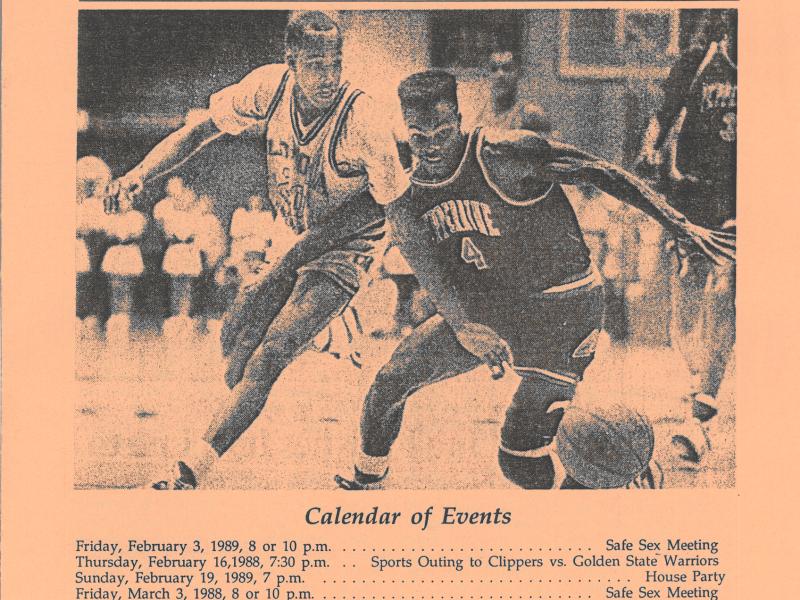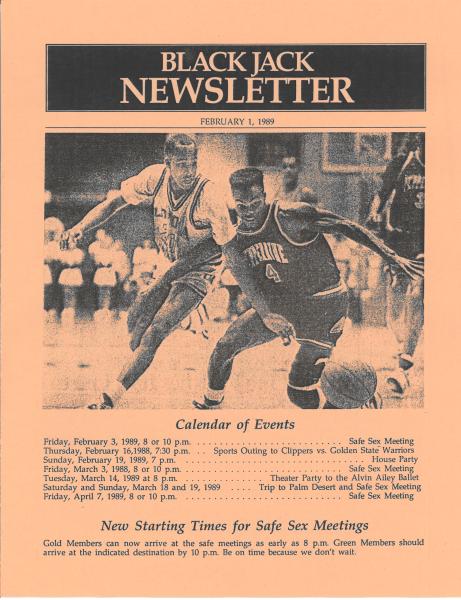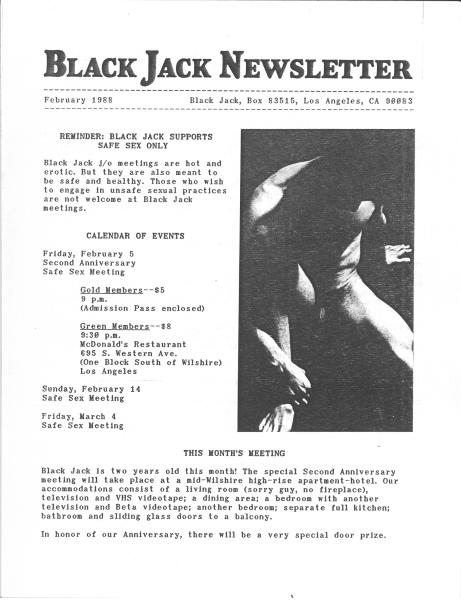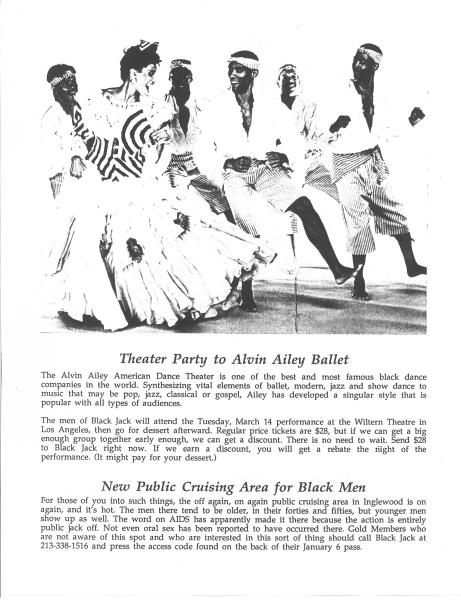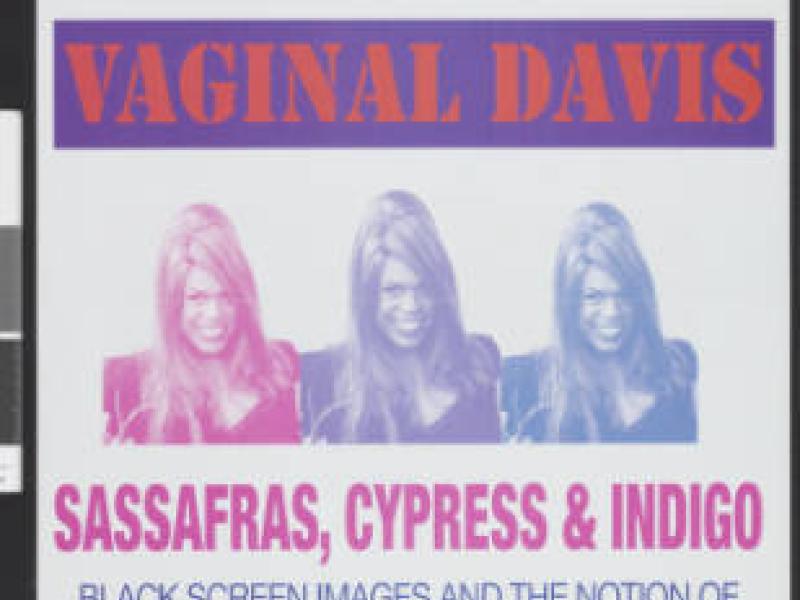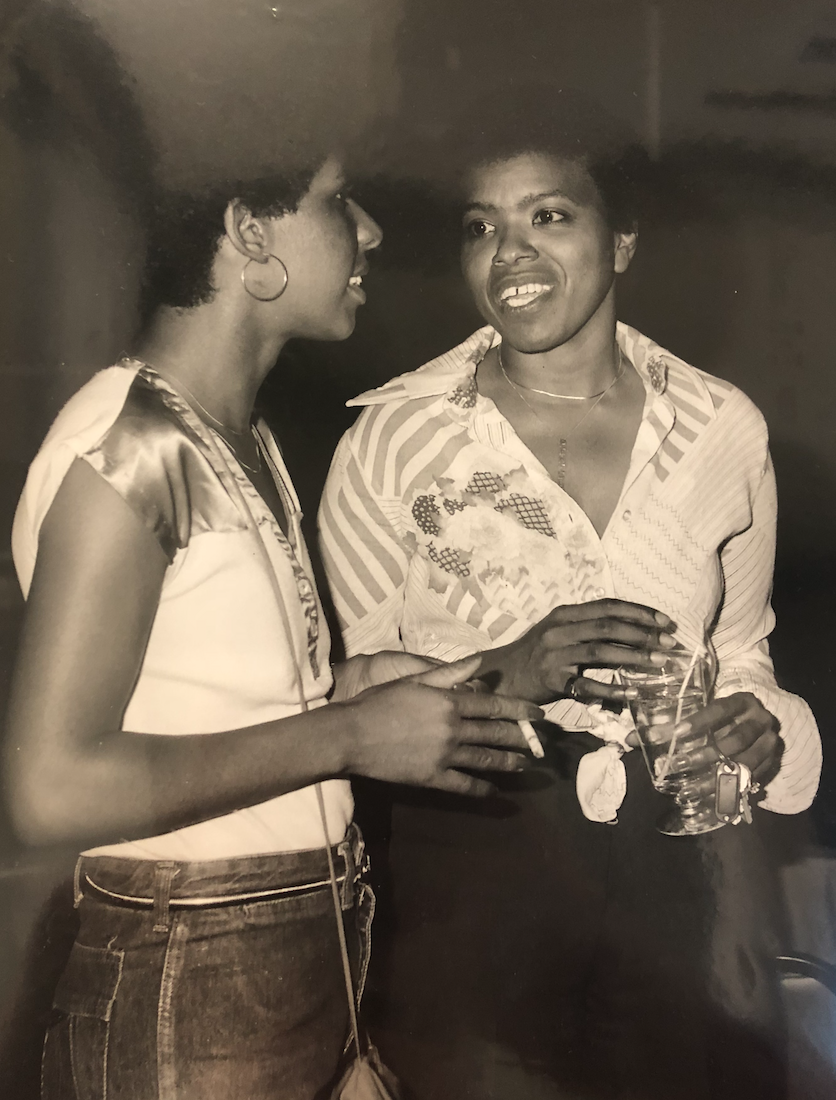Alan Bell started the organization Black Jack because he sought to unify queer African American men, educate others, and enjoy sex parties. In 1986, the group was formed because there were no places that implemented the message of Minority AIDS Project, which was the first community-based HIV/AIDS organization established and managed by people of color in the United States. Safe sex was not attractive to many gay men during this time despite the AIDS crisis. Among African Americans, safe sex was often practiced in the dark because it often became subject to cruel jokes or backlash — black health-conscious gay men did not have a place where they could meet and socialize comfortably, especially since gay bath houses and bars were typically full of scrutinizing party drug users and barebackers.
On the first Friday and third Saturday of each month, Black Jack would host its famous safe sex meetings, which were held in various hotel rooms. The monthly newsletter advertised these. Members had to be black, gay, and safe sex oriented, with party drugs and unprotected sex prohibited. There were two tiers of membership: green members and gold members. Green Members had to meet at a location, typically a fast-food restaurant, before 10 pm, and the whole group would travel to the hotel together. This functioned as a screening because the members of Black Jack did not welcome anyone with intent to harm or steal and needed to trust initiates to protect the secrecy of the club. In order to secretly find each other at the restaurant, members would look for a group of black men whose table had a “blackjack of spades placed discreetly on the edge”. Those who were late were left behind. As for gold members, they were given the location of the hotel room and allowed to enter any time after 8 pm. In return, they had to pay a $15 annual membership fee, as well as the universal $5 entry fee. Both types of members could bring guests if they met the criteria of being a member and were willing to share in the evening’s expenses. Green members had the chance to become gold members if they paid the $15 annual fee and satisfied one of the following: attend two Black Jack meetings as a Green Member, be sponsored by two Gold Members in good standing, or arranged for verification at a private screening. In December of 1987, the Black Jack newsletter announced that the entry price for safe sex meetings would be increasing to $6. This was done to offset the costs of running the club and to take pressure off Alan Bell’s personal wallet. The newsletter was transparent with its clients in 1987 when it gave the breakdown of the expenses for the month of November: for two meetings, the total cost amounted to $263. At this time, they had only about 25 members per meeting, which totaled to roughly $250 of revenue — an unsustainable price for the club to continue running.
Inside one of these safe sex meetings, members could do a multitude of things. To break the ice in the room, the television would usually be playing black gay pornography for those who wanted to watch and/or masturbate. Members were encouraged to bring videotapes of their own if they pleased. Usually, people would be in the back, masturbating by themselves or engaging in mutual masturbation with others. There were also others who simply walked around and watched. Before everybody got engrossed in the night's activities, Bell —leader of the organization— would cease all activities for five to six minutes. With all the attention on him, he would proceed to give a lesson on safe sex to everyone, which sometimes included condom demonstrations. After he was finished, everyone resumed whatever they were doing. Condoms were then distributed for those who wanted to have anal sex. Soft drinks, beer, wine coolers, chips, and cookies would be provided as well. By the end of the evening, some people would have made friends and exchanged phone numbers.
The club offered more social opportunities than just the bi-monthly “safe-sex meetings”. Sometimes, there would be excursions to places like Lake Arrowhead for 1988’s MLK weekend, or events like a Christmas Party and a day at the ballet. These events charged different fees and diversified the identity of Black Jack. It was a bi-monthly sex party, but it was also a place of learning — a place to meet and connect with other queer black men. Black Jack also gave members the opportunity to place personal ads. For $0.25 a word, men described themselves physically and stated their intentions, which ranged from friends to intimate relationships. This was followed by a solicitation of a response through their listed mailing address or telephone number. They encouraged men who fit their criteria to mail a response to their ad alongside a photo of themselves. Ads that were submitted to Black Jack could be rejected if “its content advertises or solicits sexual acts which are currently considered unsafe by current AIDS criteria”. Club officers also reserved the right to make necessary changes to any submissions that were out of line. Before the newsletters were published, the phone numbers listed in the classifieds section had to be verified.
After Black Jack began publishing personal ads, Alan Bell felt that the ads needed more exposure. BJ Ads was then created, and a few months later, display advertising and news blurbs were added to BJ ads. This resulted in a magazine that would later be known as BLK, which reached thousands of queer people in the Southern California area. While BLK gained traction, the production of Black Jack as a newsletter dissipated. Additional Black Jack chapters were also created in Chicago, Detroit, and New York.
“The Last Jack” was presumably the last safe-sex meeting, held on Friday, September 1, 1989 in Hollywood. After this, the club was to cut back on its regular schedule of meetings and only host special events. This policy seemed to have changed when the February 1990 issue was released with the title, “And You Thought We Had Died”. The first Black Jack safe-sex meeting of the 90s was on Friday, February 2, 1990.
